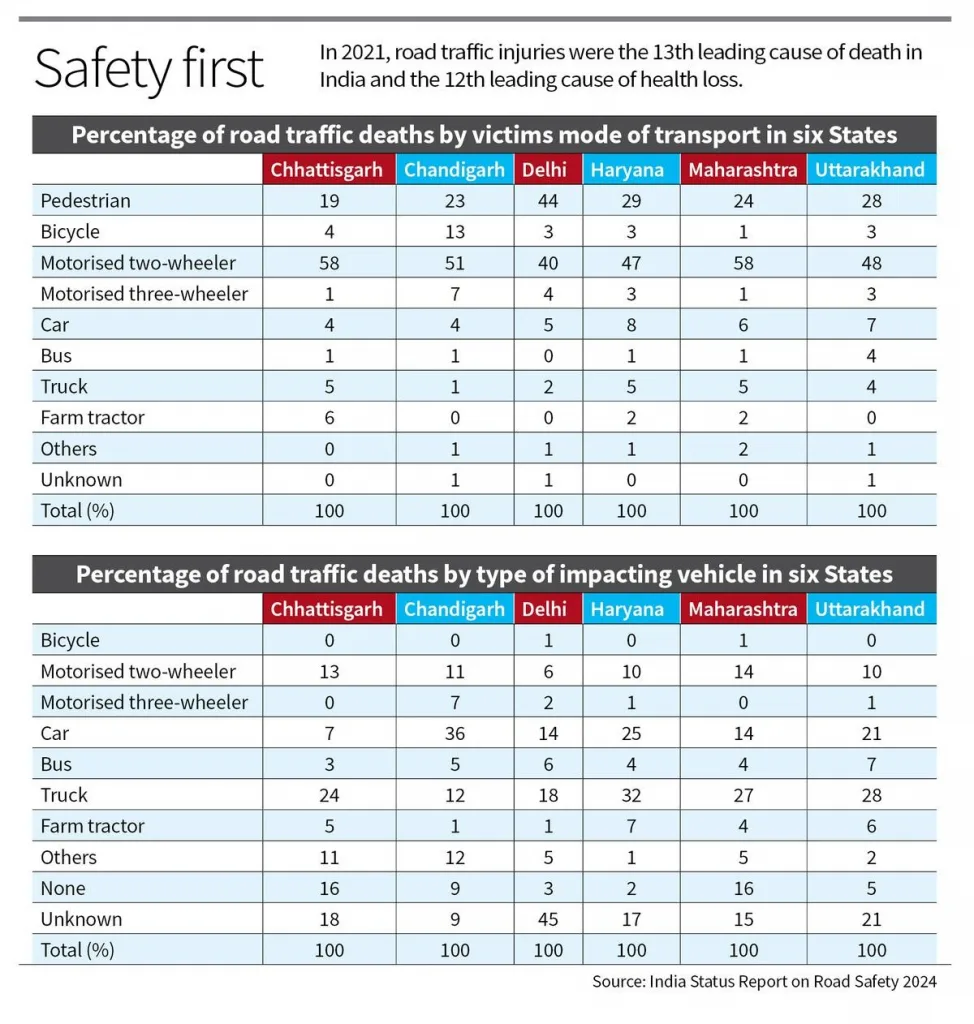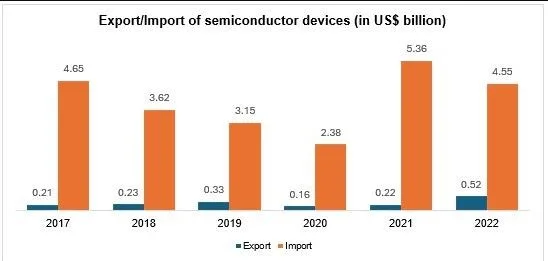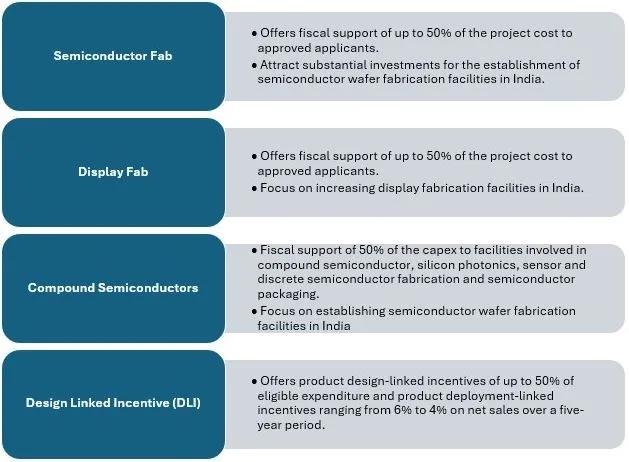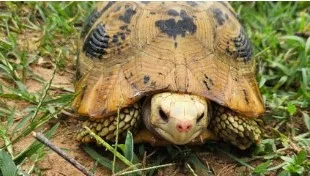UPSC DAILY CURRENT AFFAIRS (9TH SEPTEMBER, 2024)
Challenges to road safety in India
Syllabus :GS 2/Governance /GS 3/Economy
In News
- Recently, The “India Status Report on Road Safety 2024,” prepared by the TRIP Centre at IIT Delhi,
About the report
- It highlights India’s slow progress in reducing road accident fatalities and emphasizes the link between road construction, mobility, and the need for targeted accident mitigation strategies.
- It analyzed road safety in India, using data from First Information Reports (FIRs) from six States and audits of State compliance with Supreme Court directives on road safety governance.
Key Findings
- State wise :It revealed disparities in road traffic death rates across States.
- High death rates in Tamil Nadu, Telangana, and Chhattisgarh; lower rates in West Bengal and Bihar.
- Uttar Pradesh, Maharashtra, Madhya Pradesh, Karnataka, Rajasthan, and Tamil Nadu account for nearly half of all traffic fatalities.

- Vulnerable group: pedestrians, cyclists, and motorised two-wheeler riders are the most common victims of road accidents, while trucks are responsible for the highest proportion of impacting vehicles.
- Global Comparison: India’s road safety performance is significantly worse compared to developed countries like Sweden.
- The likelihood of dying in a road accident in India has increased sharply compared to these countries over the past decades.
Issues and concerns
- Current national road safety data systems are inadequate.
- Only eight States have audited more than half of their National Highway lengths, and very few States have done the same for their State Highways.
- Basic traffic safety measures, including traffic calming, markings, and signage, are still lacking in most States
- Lack of a national crash-level database and reliance on aggregated police records limit effective analysis and intervention.
- Helmet usage is low, especially in rural areas, and trauma care facilities are inadequate.
- Road traffic injuries are a major public health issue with minimal progress in reducing fatalities.
- Most Indian States are unlikely to meet the United Nations Decade of Action for Road Safety goal to halve traffic deaths by 2030.
Recommendations:
- Road safety education is as vital as other basic survival skills.
- Central and State governments need to prioritise the scale-up of road safety interventions.
- A national database for fatal crashes should be established.
- Public access to this system will improve understanding of specific risks to road users and the effectiveness of various interventions implemented in the States.
- Tailored strategies are essential to address the unique road safety challenges faced by different States.
India and UAE MoU for Nuclear Cooperation
Syllabus: GS2/IR
Context
- India and the United Arab Emirates (UAE) signed a Memorandum of Understanding (MoU) for civil nuclear cooperation.
About
- During the 2015 visit of Prime Minister Narendra Modi to the UAE, both countries had agreed to cooperate in “peaceful use of nuclear energy”, including in areas of “safety, health, agriculture, and science and technology.”
- The agreement is part of the UAE’s policy of expanding investments into the nuclear energy sector.
- LNG Supply: Apart from the nuclear cooperation-related MoU, the two sides signed an MoU for long-term LNG supply between Abu Dhabi National Oil Company (ADNOC) and Indian Oil Corporation Limited.
India’s Civil Nuclear Cooperation
- Civil nuclear cooperation involves collaboration between countries or organizations to develop and use nuclear technology for peaceful purposes.
- It can encompass a variety of activities, including: Energy Production, Regulatory and Safety Standards, Nuclear Fuel Supply, and Non-Proliferation Efforts.
- India’s civil nuclear program is aimed at harnessing nuclear energy for peaceful purposes, primarily electricity generation, and other applications.
- India has Nuclear cooperation with France, Russia, U.S.A and Japan.
Related Agreements
- Indo-U.S. Nuclear Deal (2005): The deal was instrumental in improving India’s access to global nuclear markets.
- Civil Nuclear Cooperation Agreement with the U.S. (2008): It allowed India access to civilian nuclear technology and fuel from the international market.
- This agreement required India to separate its civilian and military nuclear facilities, with the civilian facilities subject to safeguards by the International Atomic Energy Agency (IAEA).
Key Reactors and Projects:
- Major nuclear power plants in India include those located in Tarapur, Kudankulam, and Rajasthan.
- These facilities play a significant role in India’s nuclear energy production.
- Fast Breeder Reactors: India is developing advanced nuclear reactors, such as Fast Breeder Reactors (FBRs), which use plutonium to generate more fuel than they consume.
- Thorium-Based Reactors: India has a long-term vision of utilizing its abundant thorium resources in nuclear reactors.
- The country is working on thorium-based reactors, including the Advanced Heavy Water Reactor (AHWR), as part of its three-stage nuclear program.
| India’s Nuclear Weapon Program – Smiling Buddha: In 1974, India conducted its first nuclear test code-named “Smiling Buddha, and since then, it has developed a nuclear triad consisting of land-based, sea-based, and air based delivery systems. – Operation Shakti: In 1998, India conducted a series of nuclear tests at Pokhran, codenamed “Operation Shakti.” 1. These tests included both fission and fusion devices and marked India’s formal entry into the nuclear weapons club. – International Criticism: The international community has criticised India’s nuclear weapons programme, particularly the United States and its allies. – No First Use: India has a “no first use” policy, meaning it pledges not to use nuclear weapons first in a conflict but reserves the right to retaliate if attacked with nuclear weapons. |
Brief overview of the UAE and India relations
- Political : India and the United Arab Emirates (UAE) established diplomatic relations in 1972.
- Multilateral Cooperation: India and the UAE are currently part of several plurilateral platforms such as I2U2 (India-Israel-UAE-USA) and UFI (UAE-France-India) Trilateral, etc. UAE was also invited as a Guest Country to the G-20 Summit
- Economic & Commercial: India UAE trade, valued at US$ 180 million per annum in the 1970s, is today US$ 84.84 billion making UAE, India’s third largest trading partner for the year 2021-22 after China and US.
- Moreover, UAE is the second largest export destination of India (after the US) with an amount of nearly US$ 31.61 billion for the year 2022-23.
- The Comprehensive Economic Partnership Agreement (CEPA) was signed in 2022 as a major step in deepening trade relations.
- Defence cooperation: It is steered through a Joint Defence Cooperation Committee (JDCC) at the Ministry level, with the signing of Agreement on Defence Cooperation in 2003, which came into effect in 2004.
- Space Cooperation: Indian Space Research Organisation (ISRO) and the UAE Space Agency signed an MoU regarding cooperation in the exploration and use of outer space for peaceful purposes in 2016.
- Indian Community: Indian expatriate community of approximately 3.5 million is the largest ethnic community in UAE constituting roughly about 35 percent of the country’s population.
US-India Partnership for Semiconductor
Syllabus: GS3/Economy
Context
- US announced a “new partnership” with India to explore semiconductor supply chain opportunities.
About
- It will include a comprehensive assessment of India’s existing semiconductor ecosystem, regulatory framework, workforce and infrastructure needs.
- It will serve as the “basis for potential future joint initiatives” to strengthen and grow this critical sector.
- The US Department of State will partner with the India Semiconductor Mission, to explore opportunities to grow and diversify the global semiconductor ecosystem under the International Technology Security and Innovation (ITSI) Fund, created by the CHIPS Act of 2022.
- The Creating Helpful Incentives to Produce Semiconductors (CHIPS) and Science Act is intended to lure microchip manufacturing back to the US after decades of companies offshoring the technology.
What are Semiconductors?
- Semiconductors are materials with electrical properties that fall between those of conductors (like metals) and insulators (like rubber).
- They have a unique ability to conduct electricity under certain conditions while acting as insulators under others.
- They are sometimes referred to as integrated circuits (ICs) or microchips made from pure elements, typically silicon or germanium.
- In a process called doping, small amounts of impurities are added to these pure elements, causing large changes in the conductivity of the material.
- Applications: Semiconductors are used in a vast range of electronic devices.
- Transistors, which are fundamental components of modern electronic circuits, rely on semiconductor materials.
- They act as switches or amplifiers in everything from computers to cell phones.
- Semiconductors are also used in solar cells, LEDs, and integrated circuits.
India’s Semiconductor Industry
- In 2022, the Indian semiconductor market was valued at US$ 26.3 billion and is projected to expand at a CAGR of 26.3% to US$ 271.9 billion by 2032.

- Semiconductor devices include diodes, transistors and photovoltaic cells assembled or not assembled in modules or panels, light-emitting diodes (LEDs) and mounted piezo-electric crystals.
Factors favouring India
- Skilled Workforce: India leads the world with record number of Science, Technology, Engineering and Mathematics (STEM) graduates, offering the much-needed skilled workforce required in semiconductor manufacturing, design, research, and development.
- Cost Advantage: India offers a substantial cost advantage for semiconductor manufacturing due to the lower labour cost, supply chain efficiency and emerging ecosystem.
- Global Supply Chain Diversification: India has become a preferred destination for back-end assembly and testing operations amidst this industry relocation, with potential for future front-end manufacturing.
- Policy support: The Indian government has promptly seized the opportunity following the global semiconductor supply chain glut after the pandemic and showed great intent through policy support to present India as an alternative to China in the global semi supply chain.
India’s Semiconductor Ecosystem
- Supply disruptions during the Covid-19 pandemic and the geopolitical tensions arising out of China’s aggressive moves in the Taiwan Strait and the South China Sea have brought urgency to India’s efforts to develop its own semiconductor ecosystem.
- The global chip industry is dominated by companies from a very small number of countries, and India is a late entrant into this high-tech and expensive race.
- India Semiconductor Mission: It functions as a dedicated division within the Digital India Corporation.
- Its main goal is to nurture a strong semiconductor and display ecosystem to position India as a prominent global player in electronics manufacturing and design.
- Under ISM, there are several schemes in place:

- The government offers incentives for manufacturing setup in India:
- Under the Semiconductor Fab Scheme, fiscal support of 50% of the project cost on an equal footing for all technology nodes.
- Under the Display Fab Scheme, fiscal support of 50% of the project cost on an equal footing basis.
- Under the Compound Semiconductor Scheme, fiscal support of 50% of the capital expenditure on an equal footing basis, including support for discrete semiconductor fabs.
- In February 2024, the government approved the establishment of three semiconductor plants, two in Gujarat and one in Assam.
Conclusion
- Taiwan produces more than 60 percent of the world’s supply of semiconductors and more than 90 percent of the most advanced chips.
- Given the critical importance of semiconductor chips in almost everything, from missiles to mobile phones and cars to computers, the partnerships with the US have geo-strategic and geo-economic importance.
New Machine Safety Norms to Affect MSMEs
Syllabus: GS3/ Economy
Context
- The Global Trade Research Initiative (GTRI) report stated that the new safety regulations for machinery and electrical equipment will affect domestic production by the MSME segment.
Background
- Recently the Machinery and Electrical Equipment Safety (Omnibus Technical Regulation) Order, 2024, was introduced by the Ministry of Heavy Industry (MHI), which is set to take effect on August 28, 2025.
- These regulations bring in stringent safety standards for machinery and electrical equipment manufactured or imported into India, aimed at aligning Indian safety practices with global norms.
- The new rules are expected to have far-reaching consequences for the Micro, Small, and Medium Enterprises (MSMEs), which make up 90 per cent of the estimated 1,50,000 manufacturers that will be affected.
Key points of new safety norms
- The norms introduce three levels of stringent safety standards for machinery and electrical equipment manufactured or imported into India.
- These regulations apply to both machinery and their parts or subassemblies.
- It will require manufacturers to comply with the safety and conformity standards set forth by the Bureau of Indian Standards (BIS).
- The regulations cover more than an estimated 50,000 types of machinery, including key industrial equipment like pumps, compressors, centrifuges, cranes, transformers, and switchgear, which fall under 463 tariff lines or product categories.
- In FY 2024, India’s imports in these tariff lines amounted to $25 billion, with China accounting for 39.1 percent of that value.
- India also exported $17.7 billion worth of machinery in the same period.
What are the concerns?
- Though the export-oriented items have been exempted from the order that mandates prior approvals from the Bureau of Indian Standards (BIS).
- However it offers only little relief to the 1.5 lakh such equipment manufacturers as they supply to both domestic and export markets.
- Currently, most MSMEs adhere to ISO 9001 norms that don’t address safety concerns explicitly.
- On the other hand the new norms are highly technical and the lack of implementation guidelines from BIS will make compliance even more difficult for producers.
- Financial and technical barriers will pose significant hurdles for MSMEs, with compliance costs ranging from ₹50,000 to ₹50 lakh depending on the type of machinery and the standards required.
Concluding remarks
- The government should delay implementation and help the industry prepare. Without support, most MSMEs may struggle to comply and be forced to close.
- A phased approach, with extended timelines for compliance and support from industry bodies will be essential to ensure the benefits of these new safety standards are fully realized without unduly burdening smaller businesses.
| What are MSMEs? – MSMEs or Micro, Small, and Medium Enterprises are businesses that are defined by their investment and turnover levels. – They are considered an important sector of the economy as they create jobs, generate income, and promote entrepreneurship. Contribution of MSMEs – Contribution in Economy: MSMEs are often called the backbone of the Indian economy; they account for more than 11 crore jobs and contribute around 27% of India’s GDP. – Employment Generation: The sector consists of around 6.4 crore MSMEs , with 1.5 crore of them registered on the Udyam portal and employs around 23% of the Indian labor force, making it the second-largest employer in India after agriculture. – Output and Exports: They account for 38.4% of the total manufacturing output and contribute 45.03% of the country’s total exports. |
FACTS IN NEWS
Sakthan Thampuran
Syllabus: GS1/History
Context
- Minister of State for Tourism, Kerala pledged to replace a statue of Sakthan Thampuran that was knocked over by a state transport bus.
Sakthan Thampuran
- Raja Rama Varma Kunjipillai or Rama Varma IX, better known today as Sakthan Thampuran, ruled over the Cochin kingdom from 1790 to 1805.
- He was born in 1751 to Ambika Thampuran and Chendose Aniyan Namboodiri of the Cochin royal family, but was raised by an aunt who called him Sakthan, meaning ‘powerful’.
- The word thampuran is believed to be an appropriation of the Sanskrit samrat, meaning emperor.
- The Cochin kingdom, which was part of the Late Chera Empire, covered the regions between Ponnani in Malappuram and Thottappally in Alappuzha in today’s Kerala.
5 Years of Pradhan Mantri Kisan Maandhan Yojana
Syllabus: GS3/Financial Inclusion
Context
- Pradhan Mantri Kisan Maandhan Yojana (PM-KMY) has completed 5 years of implementation.
About
- Launched in 2019, the PM-KMY has been providing social security to all land-holding Small and Marginal Farmers (SMFs) across the country.
- It is a voluntary and contributory pension scheme.
- Eligible small and marginal farmers are given a fixed monthly pension of Rs. 3,000 after attaining the age of sixty.
- Farmers aged between 18 and 40 years need to contribute between Rs. 55 to Rs. 200 per month until they turn 60.
- The Central Government, through the Department of Agriculture Cooperation and Farmers Welfare, also contributes an equal amount as contributed by the eligible subscriber, to the pension Fund.
- The Life Insurance Corporation (LIC) manages the pension fund, and beneficiary registration is facilitated through Common Service Centres (CSCs) and State Governments.
District Agro-Meteorology Units (DAMUs)
Syllabus :GS 3/Economy
In News
- The India Meteorological Department (IMD) plans to revive the District Agro-Meteorology Units (DAMUs) under the Gramin Krishi Mausam Sewa (GKMS) scheme.
About District Agro-Meteorology Units (DAMUs)
- DAMUs were originally established in 2018 by India Meteorological Department (IMD) in collaboration with the Indian Council of Agricultural Research to provide local agricultural advisories using weather data.
- They are located within Krishi Vigyan Kendras (KVKs) and they use IMD weather data to create and disseminate advisories.
- These advisories, sent in local languages via text messages, WhatsApp, newspapers, and in-person communication, help farmers make informed decisions.
- Importance: They are crucial for India’s small and marginal farmers, who practice rain-fed agriculture and face challenges due to climate change.
- They provide weather-based advisories on sowing, harvesting, irrigation, and pest management, helping farmers plan their activities and prepare for extreme weather events.
- Reasons for Shutdown: DAMUs were shut down in March 2024 following claims by NITI Aayog that agro-met data was automated and the services should be privatized.
- NITI Aayog’s claims undermined the role of DAMU staff, who were essential in creating and communicating the advisories.
- Experts View :closing DAMUs was unwise and that the GKMS scheme should have been strengthened instead.
- They recommended reconsidering the decision to discontinue DAMUs and exploring ways to enhance their impact.
Joint Doctrine for Amphibious Operations
Syllabus :GS 3/Defense
In News
- Chief of Defence Staff General Anil Chauhan released the Joint Doctrine for Amphibious Operations during the Chiefs of Staff Committee (COSC) meeting in New Delhi.
About Doctrine
- It is the second Joint Doctrine released in 2024, following the Joint Doctrine for Cyberspace Operations.
- It emphasizes the focus on jointness and integration within the Armed Forces, particularly in the context of Amphibious Operations.
- It serves as a key guide for Commanders on conducting Amphibious Operations in the current complex military environment.
- importance : It enhances the Armed Forces’ ability to execute operations in the Indian Ocean Region, relevant in both wartime and peacetime.
- It highlights the importance of multi-domain operations and demonstrates the integration and cohesion among the Armed Forces.
New GoM to Look at Tax Rates for Health Insurance
Syllabus: GS3/ Economy
Context
- The Goods and Services Tax Council constituted a Group of Ministers (GoM) to review 18% GST on life and health insurance and cutting GST on cancer drugs.
About
- The GST Council approved a reduction in the GST rate on three cancer drugs — Trastuzumab Deruxtecan, Osimertinib and Durvalumab — from 12% to 5%.
- The council hiked the levy on car seat covers to 28% from 18% to bring them on par with motorcycle seats.
- It also approved a cut in the tax on some extruded savory snacks from 18% to 12%, to do away with their distinction with the likes of Namkeens and Bhujia.
| Goods and Services Tax (GST) Council – The Goods and Services Tax (GST) Council is a constitutional body established under Article 279A of the Indian Constitution through the 101st Amendment Act of 2016. – The Union Finance Minister is the Chairperson of the GST Council. – The GST Council makes recommendations to the Union and the States on key GST-related issues, including: 1. Taxes, cesses, and surcharges to be subsumed under GST 2. Goods and services to be subject to or exempt from GST 3. Model GST laws, principles of levy, and apportionment of IGST 4. Tax rates, thresholds, special provisions, and any other matter relating to GST. – Dispute resolution: The Council also serves as a platform to resolve disputes between the Centre and the States or among the States themselves on GST-related matters. – The Centre has one-third of the total voting power, while the States collectively have two-thirds. |
Elongated Tortoise (Indotestudo Elongata)
Syllabus: GS3/ Environment
Context
- The elongated tortoise was spotted in Haryana’s Damdama area during a research survey in the Aravallis.
About
- Characteristics: The tortoise is medium-sized with a yellowish brown or olive shell and distinct black blotches at the center of each scute.
- The tortoise has on its nostril a pink ring, which appears in the breeding season.
- Habitat: The species, also referred to as the Sal Forest Tortoise, inhabits open deciduous forest patches, including Sal and evergreen forest habitats, dry thorn forests, and savannah grasslands.
- Distribution: The species is widely distributed across northeast India, Bangladesh, Nepal, Bhutan, Thailand, Vietnam, Cambodia, Laos, and Malaysia.
- A disjunct tortoise population exists in the Chota Nagpur plateau in eastern India.
- IUCN Status: Critically Endangered

Anti-Submarine Warfare Shallow Water Crafts: Malpe and Mulki
Context
- Malpe and Mulki, fourth and fifth ships of the eight Anti-Submarine Warfare Shallow Water Craft (ASW SWC) project, built by M/s Cochin Shipyard Ltd, for the Indian Navy, were launched.
- Mahe, Malvan and Mangrol are the first three ships of the ASW SWC project.
About
- Malpe and Mulki, named after ports of strategic importance along the coast of India, are the Mahe-class of ships and will replace the in-service Abhay class ASW Corvettes of the Indian Navy.
- It is designed to undertake anti-submarine operations in coastal waters, low intensity maritime operations and mine-laying operations, apart from search and rescue.
- Equipped with light-weight torpedoes, anti-submarine warfare rockets, a close-in weapon system, and remote-controlled guns, these ships can achieve a maximum speed of 25 knots with endurance of up to 1800 nautical miles.
India to host International Cooperative Alliance’s General Assembly
Context
- India will host the International Cooperative Alliance’s general assembly and global conference for the first time in November this year, at Bharat Mandapam, New Delhi.
About
- The theme for this year’s conference is “Cooperatives Build Prosperity for All,” which is in line with the Prime Minister Narendra Modi’s vision of ‘Sahkar se Samriddhi’.
- The Conference will also mark the official launch of the UN International Year of Cooperatives – 2025.
- A commemorative stamp celebrating the International Year of Cooperatives – 2025 will be launched during the event.
- The Conference will be used to showcase Indian Cooperatives’ products and services in the ‘Haat’ setup with the theme of Indian Villages.
- India is home to one-fourth of the world’s cooperatives, both in terms of numbers and membership, and this move will further strengthen the cooperative movement in the country.
International Cooperative Alliance (ICA)
- It is the premier body for the Global Cooperative movement.
- It was established in 1895 as a non-profit international association to advance the cooperative social enterprise model.
- The ICA’s General Assembly meets every year whereas global conferences happen every two years.
